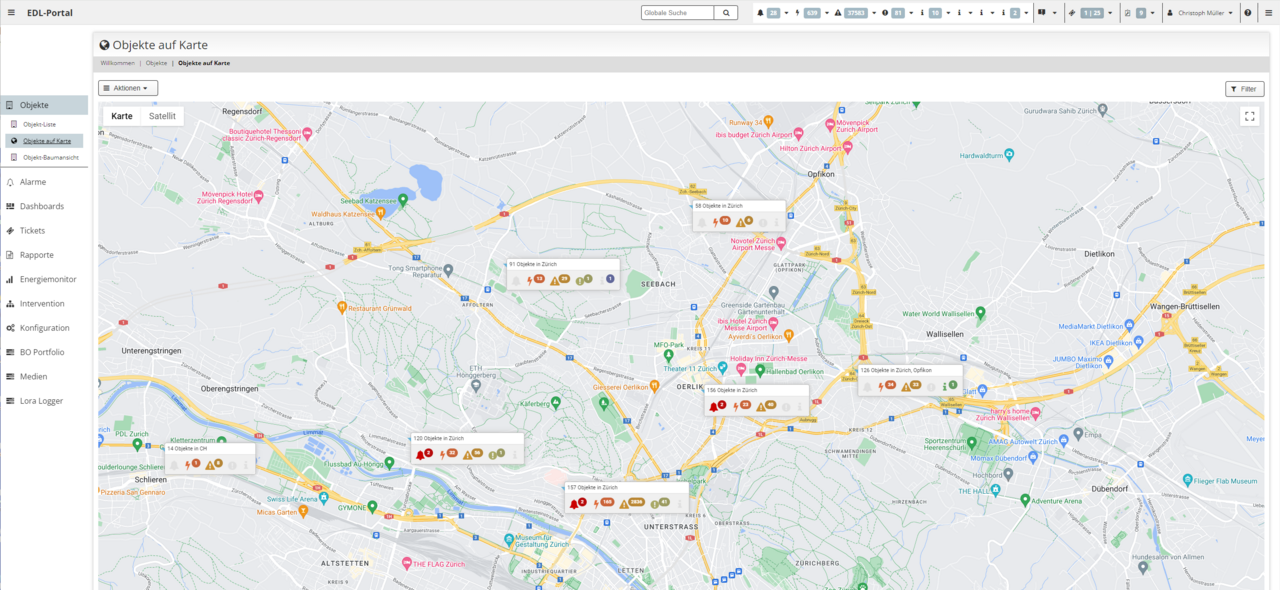
User-friendliness and access
The EDL portal is a comprehensive solution for energy management that offers a user-friendly interface and easy access for different user groups. User-friendliness and easy access are crucial for the successful implementation and use of the portal.
1. Importance of user-friendliness and access
Ease of use and access are key factors that determine the acceptance and effectiveness of the EDL portal. A user-friendly system enables users to make efficient use of the portal's functions, while easy access ensures that all relevant user groups can access the system without any problems.
2. Main components of user-friendliness and access
2.1. Intuitive user interface
- Dashboards: Interactive and customizable dashboards provide a clear and concise presentation of key data and metrics.
- Navigation structure: A logical and easy-to-understand navigation structure enables users to quickly find the functions they need.
2.2. User administration and access controls
- Role-based access control: Different user roles (e.g. administrator, technician, manager) are given specific access rights to ensure that each user can only access the functions and data relevant to them.
- Multi-client capability: Allows the administration of any number of individual clients, which in turn can contain their own clients.
- Multi-factor authentication: Increases the security of access through additional authentication steps.
2.3. Adaptability and personalization
- User-defined settings: Users can customize the interface and presentation of data according to their individual needs.
- Automated reports and notifications: Users can configure and automate reports and notifications according to their requirements.
3. Functions to improve user-friendliness and accessibility
3.1. Easy registration and login
- User-friendly registration processes: New users can be registered quickly and easily.
- Single Sign-On (SSO): Allows users to access the EDL portal with existing login credentials from other systems (in preparation).
3.2. Intuitive operation
- Drag-and-drop functionality: Facilitates the customization of dashboards and reports.
- Context-sensitive help: Provides support and explanations directly in the user interface.
3.3. Visual data preparation
- Graphs and diagrams: Visualize complex data in an understandable way.
- Heatmaps and trends: Help to quickly recognize patterns and anomalies.
3.4. Mobile accessibility
- Mobile apps: Provide access to the EDL portal via smartphones and tablets.
- Responsive design: Automatically adapts the display of the user interface to different screen sizes.
3.5. Interactive reports and dashboards
- Real-time data update: Ensures that the data displayed is always up-to-date.
- Export functions: Enable easy export of data and reports to various formats.
4. Advantages of user-friendliness and access
4.1. Increased acceptance
- A user-friendly system increases user acceptance as it is easier to use and more intuitive to understand.
4.2. Increased efficiency
- Intuitive operation and simple navigation allow users to work faster and more efficiently.
4.3. Improved decision-making
- Visual data preparation and interactive dashboards provide clear insights and support well-founded decisions.
4.4. Time and cost savings
- Simple and fast access as well as automated reports and notifications save time and reduce administrative effort.
4.5. Security and compliance
- Role-based access controls and multi-factor authentication ensure security and adherence to compliance requirements.
Conclusion
The integration of user-friendliness and easy access in the EDL portal is crucial for the successful use and acceptance of the platform. An intuitive user interface, role-based access controls and mobile accessibility ensure that all user groups can work efficiently and make informed decisions. The continuous development and adaptation of user-friendliness and access mechanisms ensure that the EDL portal meets changing requirements and can be used successfully in the long term.

